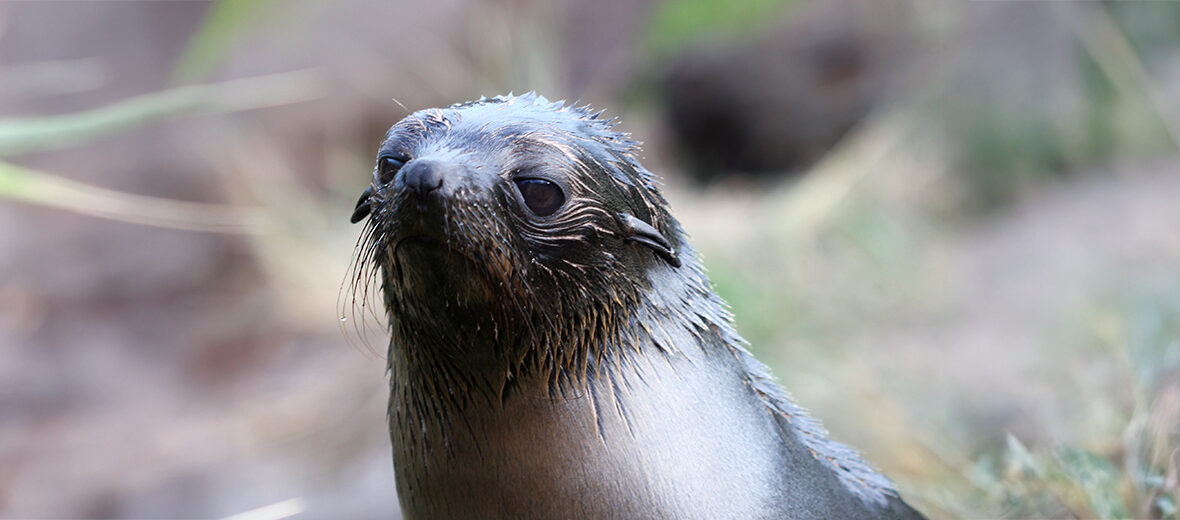
The New Zealand fur seal, aka Australasian fur seal, South Australian fur seal, Antipodean fur seal, long-nosed fur seal, or kekeno, can be found throughout western, southern, and eastern Australia, as well as surrounding New Zealand. These fur seals dwell in the Indian and Pacific Oceans. New Zealand fur seals face the threats of overfishing, bycatch (getting caught in long lines and gill nets); recreational activities, which disturb their breeding grounds; and pollution, primarily from micro plastics. However, they number an estimated 100,000 individuals, and are thus listed as Least Concern by the IUCN.
First the Stats…
Scientific name: Arctocephalus forsteri
Weight: Up to 407 lbs.
Length: Up to 8.2 feet
Lifespan: Up to 17 years
Now on to the Facts!
1.) These fur seals are capable of swimming quickly through the water and even porpoising (leaping from the water while rapidly swimming).
2.) Due to the diel vertical migration (diurnal vertical migration) of their prey, they dive deeper during the day and shallower at night, as their prey moves to avoid the sunlight.
3.) They vocalize via barks or whimpers, whereas pups emit a higher pitch wail.
4.) Squid, octopus, fish, and birds make up their diet.
5.) Orcas, sharks, male New Zealand sea lions, and potentially leopard seals all prey on these fur seals.
But wait, there’s more on the New Zealand fur seal!
6.) In Australian Commonwealth waters, New Zealand fur seals are protected under the Environment Protection Biodiversity Conservation (EPBC) Act 1999, where they are listed as a protected marine species.
7.) Females undergo a delayed implantation of up to 3 months. This is where the egg doesn’t attach to the uterine wall immediately.
Did you know…?
These fur seals can dive longer, up to 11 minutes, and deeper than any other fur seal at up to 1,247 feet!
8.) The female will experience a gestation (pregnancy) of up to 9 months, that yields a single pup.
9.) At around 21 days, pups will gather into small pods of other pups.
10.) When the female returns from sea to feed her young, she will only feed her own. It has been documented that females can be rather aggressive towards other pups.
Now a Short New Zealand Fur Seal Video!
Be sure to share & comment below! Also, check out the Critter Science YouTube channel. Videos added regularly!
Want to suggest a critter for me to write about? Let me know here.
Some source material acquired from: Wikipedia & IUCN
Photo credit: Avenue




